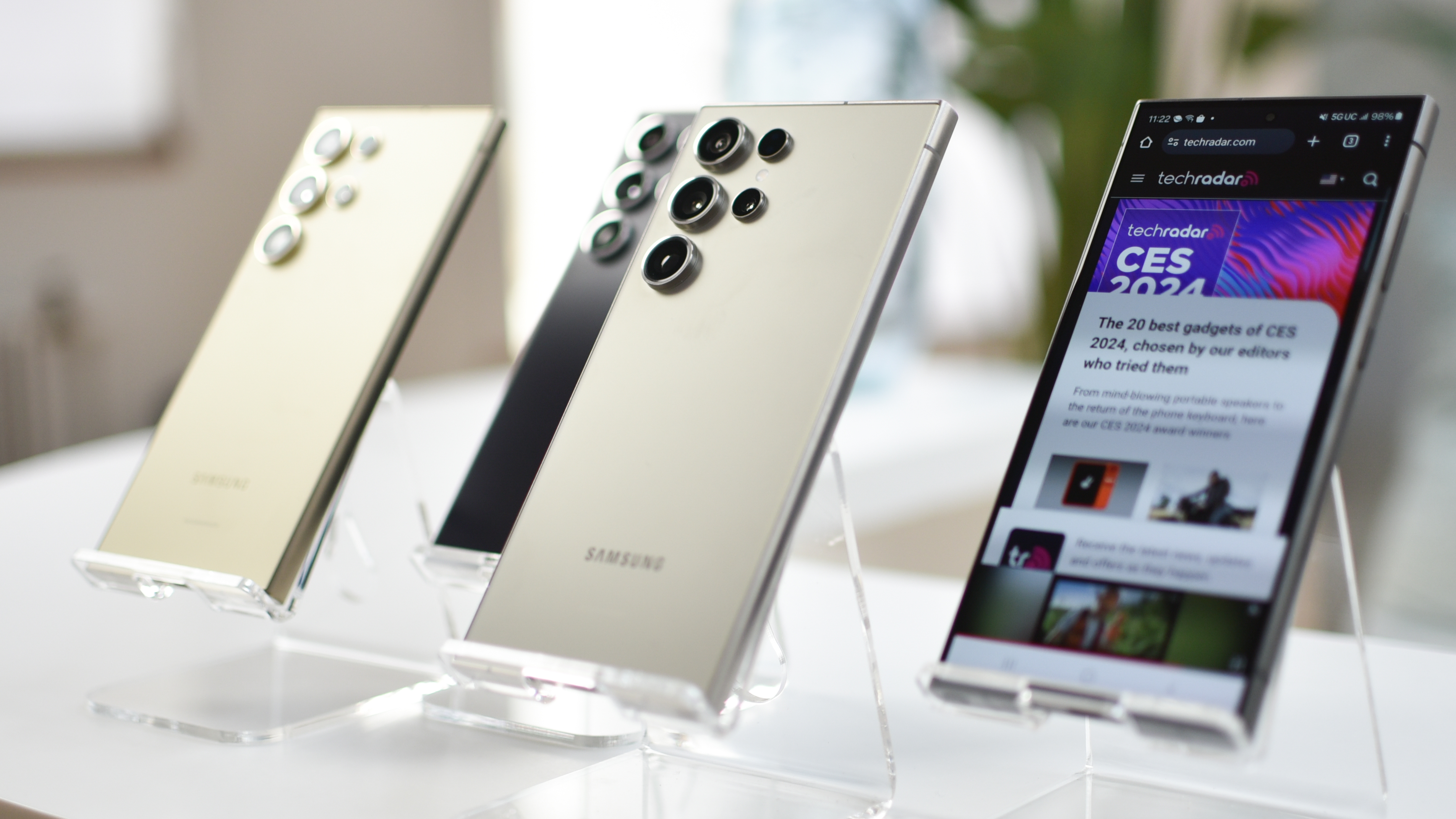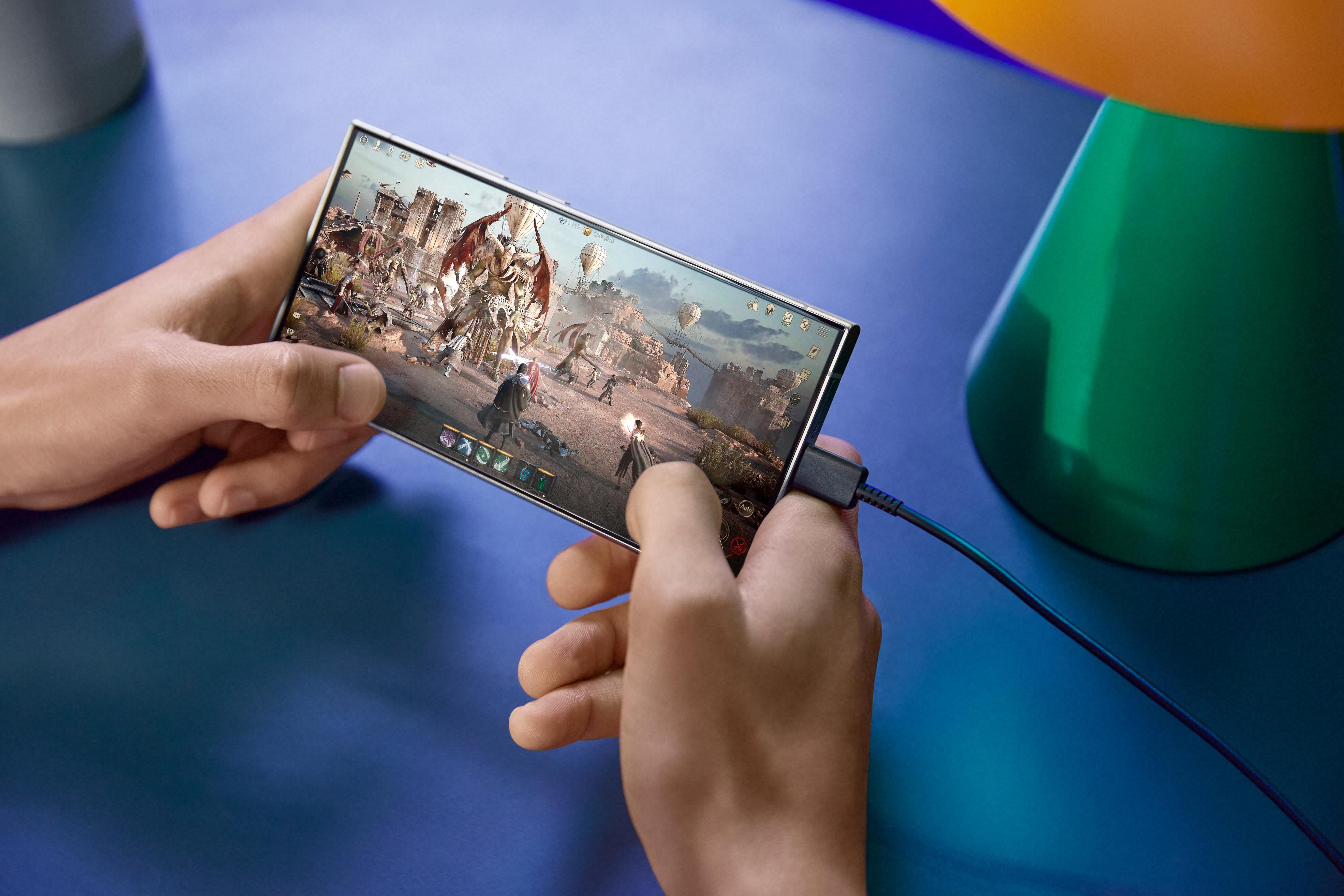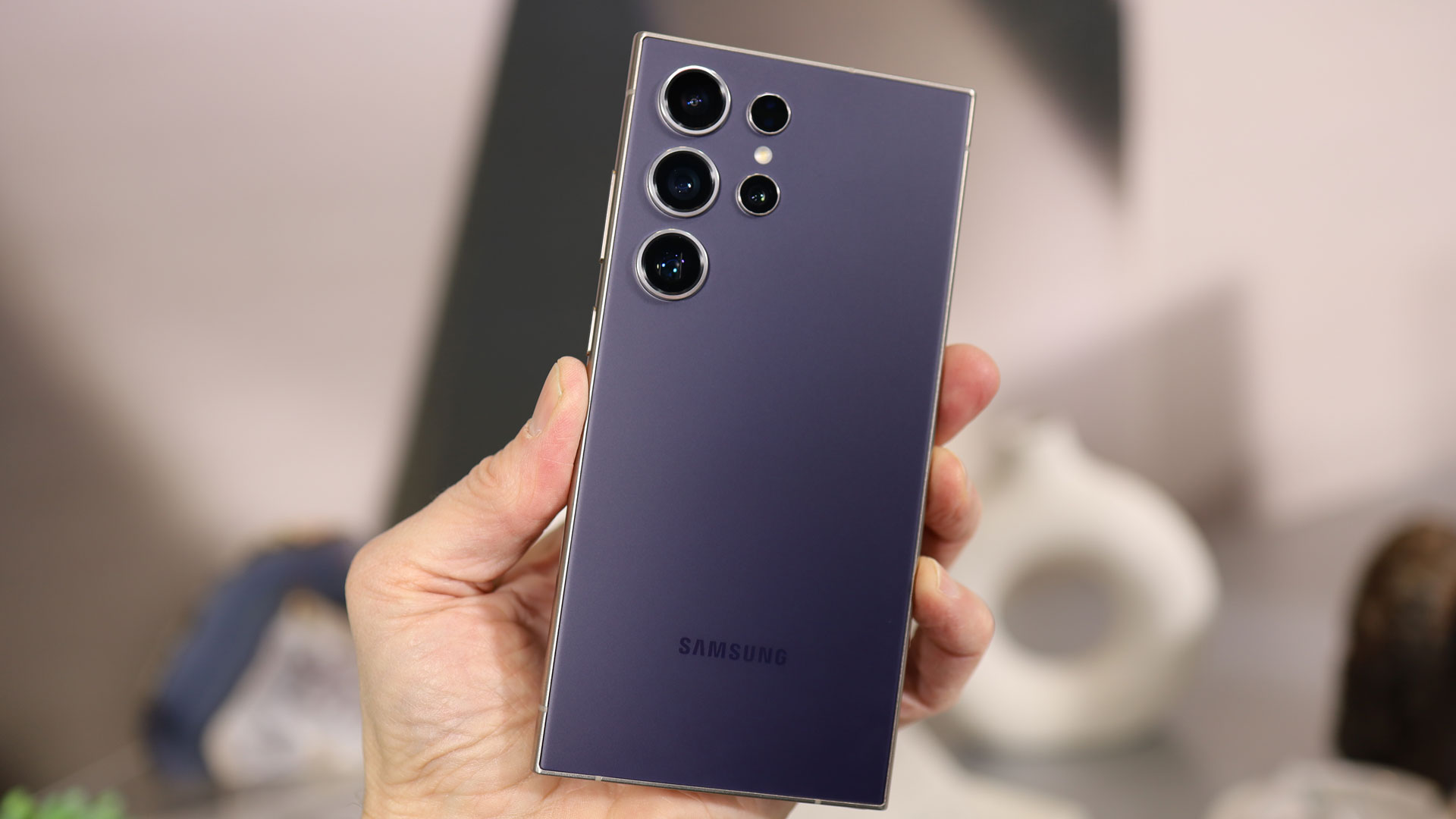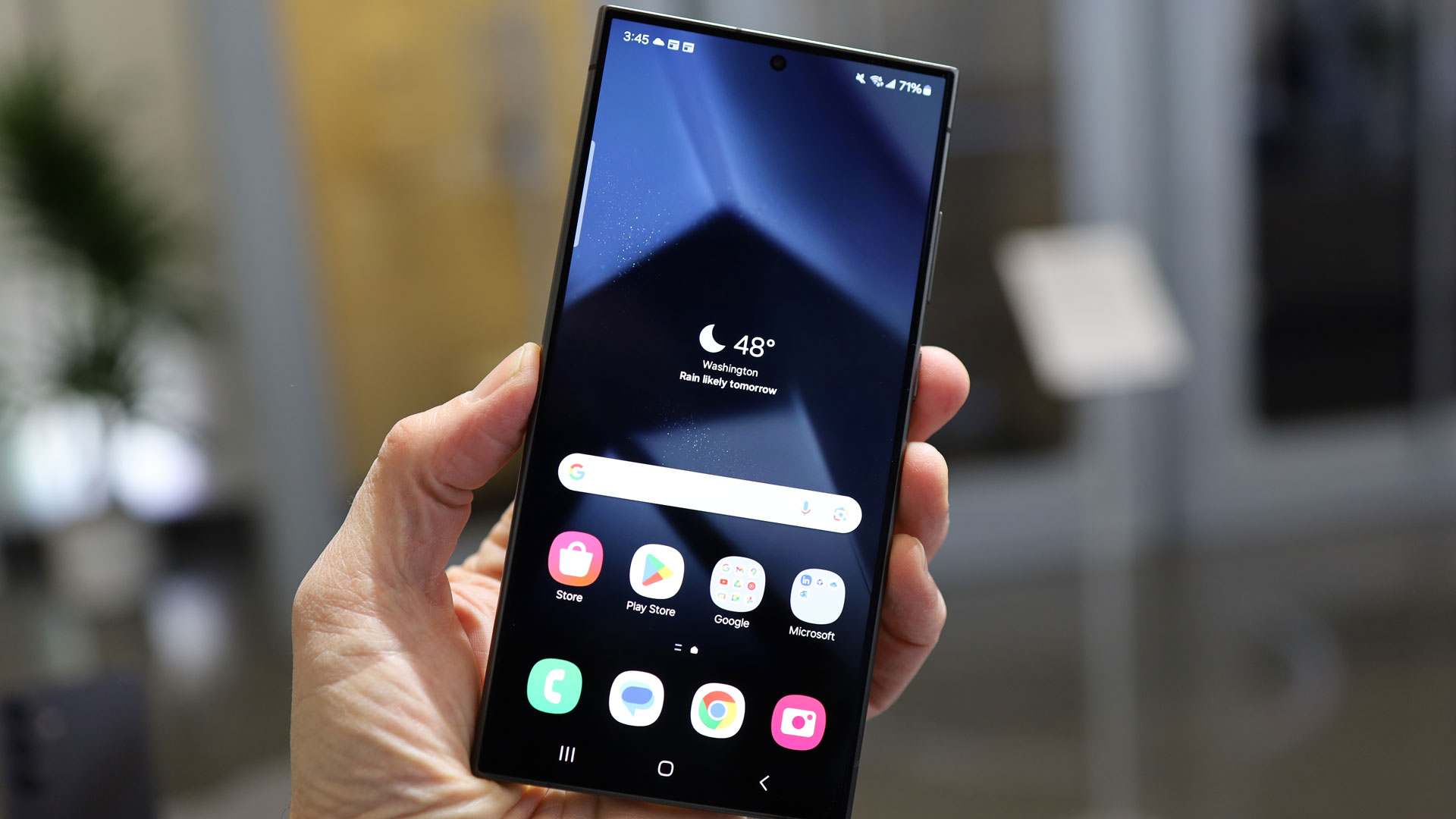I’ve been obsessed with handheld game consoles since the 1990s and my first Game Boy, and while I love my Nintendo Switch it’s relatively weak. Meanwhile, the more powerful Steam Deck is too bulky and short-lived to be portable, proving that modern handheld gaming is a difficult balance to get right.
However, salvation may have come in the form of the Samsung Galaxy S24 Ultra.
Watching the recent Samsung Galaxy Unpacked event I noticed its impressive specs and began to wonder if my next gaming handheld should also be my next mobile phone.
I play Android games like Call of Duty: Mobile, Minecraft, and Genshin Impact on my mobile devices. And I recently bought a Retroid pocket 3+ to play both Android and emulated games, though this device runs on Android OS but has serious limitations to its CPU power.
Even the best gaming phones I’ve previously used felt clunky and limited, not quite managing to be a phone as well as being a gaming device. Conversely, all previous Samsung phones I’ve used at least provided a streamlined smartphone experience and decent gaming.
Heavy-hitting hardware

The Samsung Galaxy S24 Ultra appears to outperform nearly all of my handhelds and most phones I’ve used due to the Samsung-specific overclocked 3.39GHz Snapdragon 8 Gen 3 chip, which should give the S24 Ultra an edge over even other Snapdragon 8 Gen 3 phones.
The onboard graphics chip is an Adreno 750 GPU which Samsung claims is 25% more powerful than its predecessor and 25% more efficient. It also includes 12GB RAM which is just behind the Steam Deck's 16GB LPDDR5 and much more than the Nintendo Switch’s 4GB of DDR4.
Storage on the Galaxy S24 Ultra could be an issue, as it comes with fixed internal storage in 256GB, 512GB, or 1TB configurations, However, the Nintendo Switch, Retroid Pocket, and Steam Deck can all have internal storage supplemented by microSD cards.
Displays on smartphones are much more sophisticated than even the best handhelds like the Steam Deck OLED and its 7.4-inch screen supports a resolution of 1200x800 and a 90Hz refresh rate. The Nintendo Switch uses a 7-inch OLED display that only supports and maximum resolution of 720p and a maximum refresh rate of 60Hz, but has the obvious benefit of being able to be easily connected to a TV.
Despite its slightly smaller 6.8-inch display, the Samsung Galaxy S24 Ultra dominates the others due to its higher QHD+ resolution and a panel that looks fluid and smooth thanks to its 120Hz refresh rate.
Outdoor gaming should be no issue due to the Galaxy S24 Ultra having one of the brightest displays on the market with 2,600 nits brightness and its adaptive display technology detects the lighting in your environment and adjusts accordingly.
Real ray tracing in smartphone

The Samsung S24 Ultra's graphical capabilities look to be more in line with a powerful gaming handheld than a smartphone due to its impressive hardware and the inclusion of hardware-acelrated ray tracing that's compatible with the Unreal 5 engine.
For the uninitiated, ray tracing is a graphically intensive process that mimics how light interacts with objects by following the path of individual rays of light to create realistic lighting, reflections and shadows in real time, creating more realistic and immersive games.
Mobile ray tracing may not be as complex or powerful as ray tracing implemented on expensive graphics cards and game consoles due to it only having a fraction of the amount of power to draw from compared with an Nvidia GeForce RTX 4080 pulling in 320W and the Xbox Series X using around 200W. However, it’s still remarkable technology has been miniaturized and incorporated into phones.
At the moment the selection of games on mobile that currently use this feature is limited. But in time more developers are likely to adopt this technology and we’ll hopefully see more realistic and immersive games than ever on a mobile platform. Some of the games that currently use this technology are PUBG Mobile, Rainbow Six Mobile, War Thunder Edge, Bright Memory Mobile, CarX Street, and Arena Breakout.
In comparison, the Nintendo Switch has no ray tracing support and the Steam Deck's ray tracing is rather limited.
Keeping cool but compact

All that power is no use if the device can’t use it for long and Samsung claims that the Galaxy S24 Ultra can sustain this high performance due to its redesigned cooling systems and larger vapor chamber.
If the Galaxy S24 Ultra can stay cool during long gaming sessions, then Samsung may have gone some way to overcome a pervasive issue of heat and performance throttling, which compact gaming devices like the Switch and especially the Steam Deck have been known to struggle with. But we'll have to see if this pans out in a full review and our own testing.
A glut of games

Cutting-edge hardware isn’t the only deciding factor when looking for a new gaming device, the selection of games can be even more important. The Nintendo Switch wins on this count, having around over 10,000 games, while the Steam Deck supports over 8,000 Steam Deck-verified and playable titles leaving me spoilt for choice.
The Google Play store has some options for the Galaxy S24 Ultra and there is also the possibility of playing classic titles using emulation.
However, the easiest and legally safer option would be to use game streaming options like Nvidia GeForce Now, Xbox Cloud Gaming, PS Remote Play, and Luna. These games streaming services have a large selection of games provided you have good enough connection speeds which should be covered by the 5G, LET, and Wi-Fi 6E connections and you are in an area with good enough reception.
So taking that into account, and the myriad of Android games available, the Galaxy S24 Ultra won't be short of things to play.
Chilling cost

The biggest disadvantage of the Samsung Galaxy S24 Ultra is its high price, starting at $1,299 / £1,249 / AU$2,199 it costs more than two Steam Deck OLEDs or four Nintendo Switch OLEDs and double the price of a PlayStation 5 console. The only handheld that comes close to its price tag is the Ayaneo Kun, which is closer to a handheld PC like the Steam Deck.
Of course, the Galaxy S24 Ultra can do a huge amount more than just gaming, with powerful cameras and a host of AI features (check our our Samsung Galaxy S24 AI FAQ) to justify its price, evne for a flagship phone.
So in short, the Samsung Galaxy S24 Ultra might just be the best non-gaming, gaming device that could become my next handheld 'console' of choice. And if it does deliver on ray tracing and consle-quality gaming, then it could be a singal for gaming handheld manufacturers to up their... game.
For our initial impressions of the new Galaxy phones, check out our hands-on Samsung Galaxy S24 review, hands-on Samsung Galaxy S24 Plus review, and hands-on Galaxy S24 Ultra review.
from TechRadar - All the latest technology news https://ift.tt/R7XmnEg

0 coment�rios: